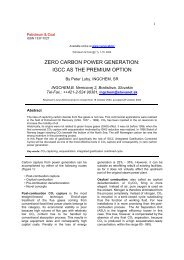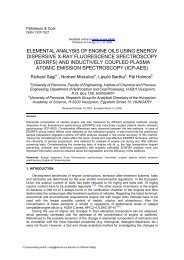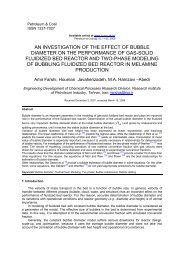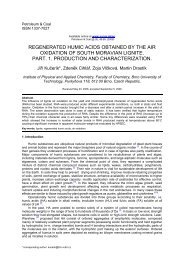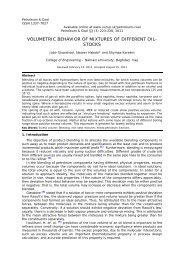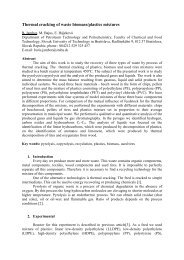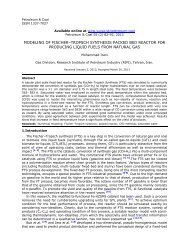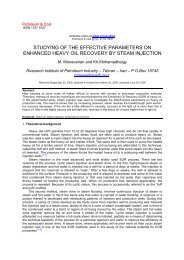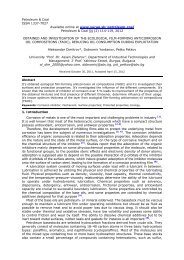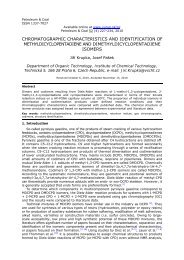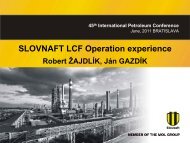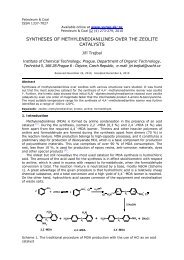diesel hydrotreaters revamp a way for increasing production
diesel hydrotreaters revamp a way for increasing production
diesel hydrotreaters revamp a way for increasing production
You also want an ePaper? Increase the reach of your titles
YUMPU automatically turns print PDFs into web optimized ePapers that Google loves.
44th International Petroleum Conference, Bratislava, Slovak Republic, September 21-22, 2009 4<br />
RESULTS AND DISCUSSION<br />
During the per<strong>for</strong>mance test of the HDS-3 unit the product (stable<br />
hydrogenate) properties were as follows:<br />
- Product properties<br />
Sulphur , wt ppm ≤ 5<br />
Density at 15 °C, kg/m 3 840.5-843.6<br />
Polynuclear aromatics , % 4.6-5.8<br />
These data indicate that the increase of the catalyst volume by a factor<br />
of 1.9 (decreasing the LHSV from 1.7 to 0.90h -1 ) allowed the LNB heavy<br />
middle distillate hydrotreater HDS-3 to produce NZSD. The hydrogen<br />
consumption was found to be 28.3 Nm 3 /m 3 oil which was 8% higher than that<br />
recorded be<strong>for</strong>e the reconstruction (26.3 Nm 3 /m 3 oil).<br />
During the per<strong>for</strong>mance test of the HDS-2 unit the product (stable<br />
hydrogenate) properties were as follows:<br />
- Product properties<br />
Sulphur , wt ppm ≤ 5<br />
Density at 15 °C, kg/m 3 844-845<br />
Polynuclear aromatics , % 4.6-5.8<br />
These data indicate that the increase of the catalyst volume by a factor<br />
of 1.7 (decreasing the LHSV from 2.0 to 1.17h -1 ) allowed the LNB heavy<br />
middle distillate hydrotreater HDS-2 to produce NZSD. The hydrogen<br />
consumption was found to be 34.2 Nm 3 /m 3 oil which was 14% higher than that<br />
recorded be<strong>for</strong>e the reconstruction (30.1 Nm 3 /m 3 oil).<br />
Figures 1 and 2 present the deactivation of the catalyst TK-576 Brim in<br />
the LNB HDS-3 and HDS-2 heavy middle distillate <strong>hydrotreaters</strong>. It is evident<br />
from these data that the catalyst in HDS-2 unit has exhibited higher<br />
deactivation rate of 3.4 0 C/month, than HDS-3 catalyst whose deactivation rate<br />
is 3.0 0 C/month. With a start of run temperature (SORT) of 350 0 C and end of<br />
run temperature (EORT) of 390 0 C a cycle length of 13 months is obtained <strong>for</strong><br />
HDS-3. With a start of run temperature (SORT) of 349 0 C and end of run<br />
temperature (EORT) of 390 0 C also a cycle length of 12 months is obtained <strong>for</strong><br />
HDS-2. The replacement of the older heat exchangers in both units not only<br />
improved reliability but also improved the unit energy efficiency. The cost <strong>for</strong><br />
fuel gas was reduced by a factor of two.



